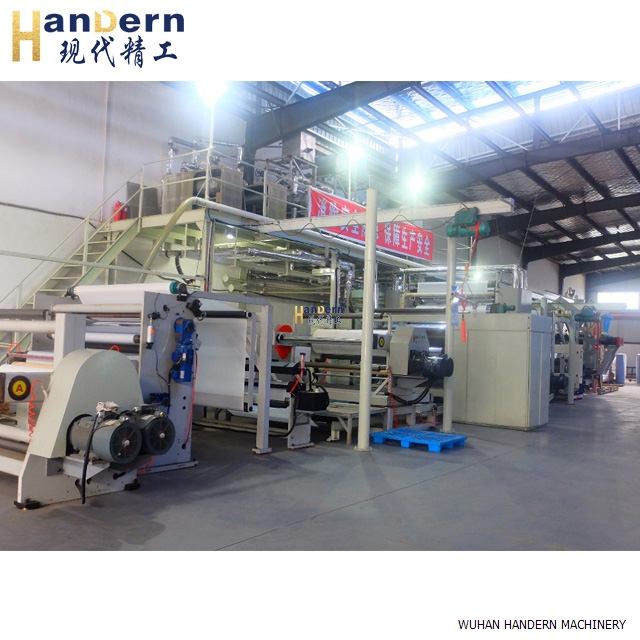Is the indentation on the film produced by the casting film production line normal
DATE:2024/9/13 14:21:27 / READ: / SOURCE:This station
The phenomenon of indentation on the thin film produced by the casting film production line is understandable to some extent, but it is not always normal. This mainly depends on various factors, including the debugging of production equipment, the selection of materials, the control of production environment, and operational skills. The following is a detailed analysis of the indentation phenomenon on the products of the casting film production line.

The working principle of the casting film production line is to melt the plastic and cast it into a thin film through a mold. During this process, if not properly controlled, indentation may occur. This may be caused by various factors, including:
Mold design defects: If the mold surface is not smooth or the design is unreasonable, it will leave imprints on the film surface.
Uneven temperature: If the temperature of the molten plastic during the casting process remains uneven, it may lead to insufficient melting in some areas, resulting in indentation.
Winding or rewinding issues: During the cooling and winding process of the film, if the winding speed is too fast or the tension is too high, it may cause indentation on the surface of the film.

2. The impact of indentation
Although small indentations on certain films may not have a significant impact on their physical properties, significant indentations can seriously affect the appearance and performance of the film. The specific impacts include:Appearance defects: Indentation can cause visual defects in the film, affecting the market competitiveness of the product.
Mechanical performance degradation: Indentation may lead to a decrease in the strength of the film during stretching and tearing, reducing its service life.
Application limitations: For some application areas that require high appearance and smoothness (such as food packaging, electronic product packaging, etc.), indentation may cause the product to be considered unqualified.

In order to minimize the occurrence of indentation on the cast film, manufacturers can take the following effective measures:
Regular maintenance of molds: Ensure the smoothness of the mold surface and avoid indentation caused by mold damage.
Optimize production parameters: Adjust the temperature, speed, and pressure in production according to the characteristics of the material, so that the film can be evenly cast.
Improve cooling tension: Control appropriate tension and speed during film cooling and winding to avoid visual defects caused by uneven cooling.
Author:admin




